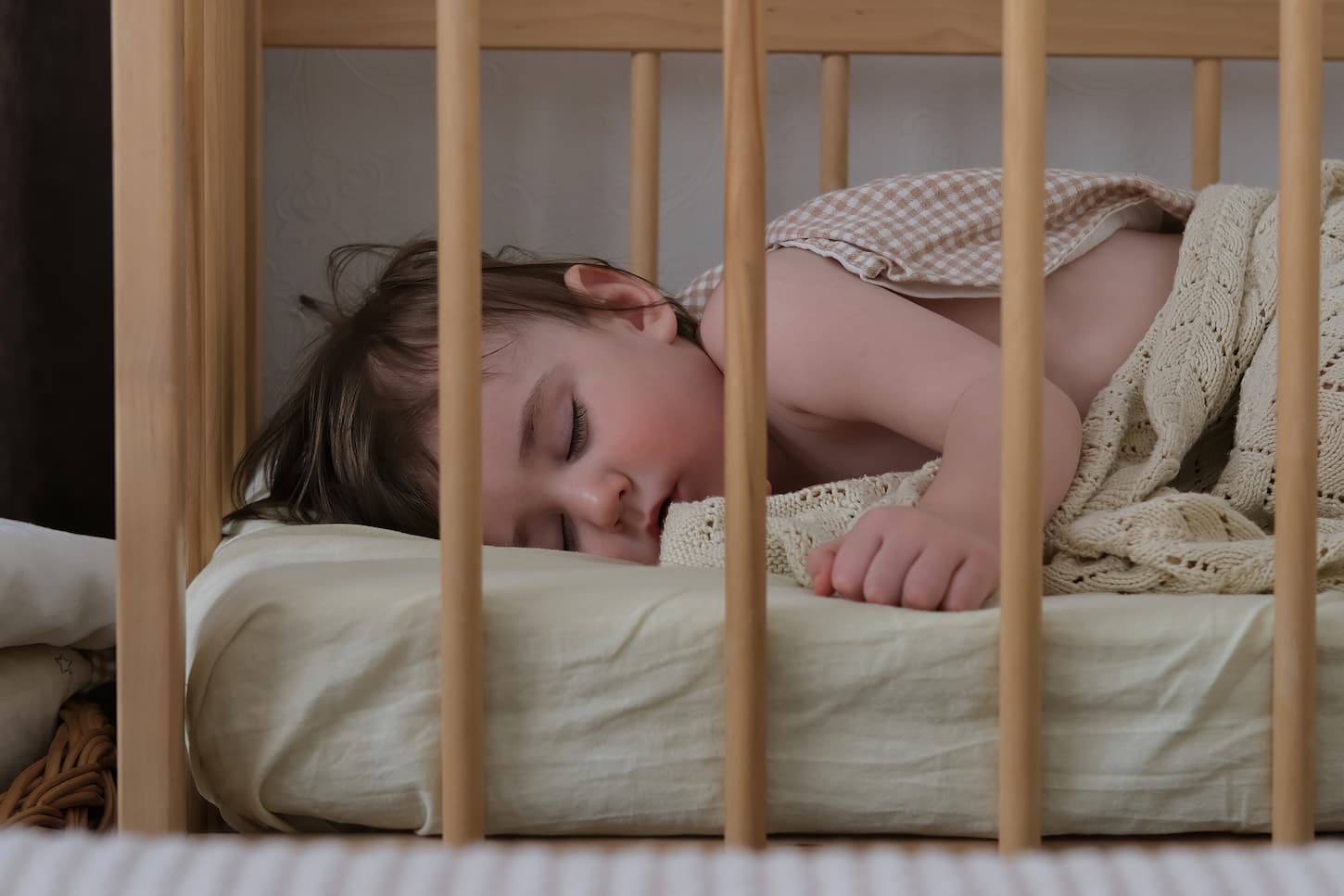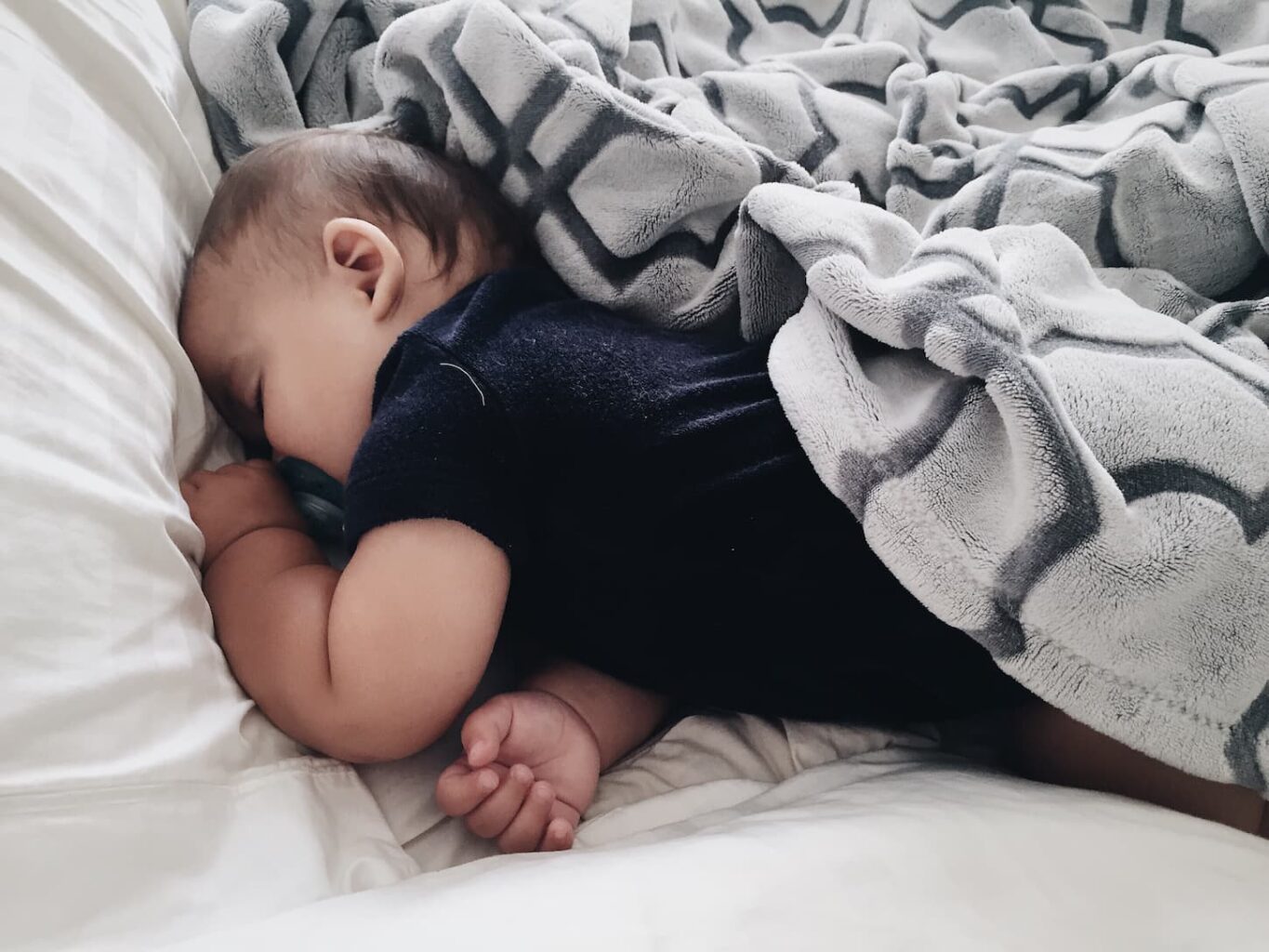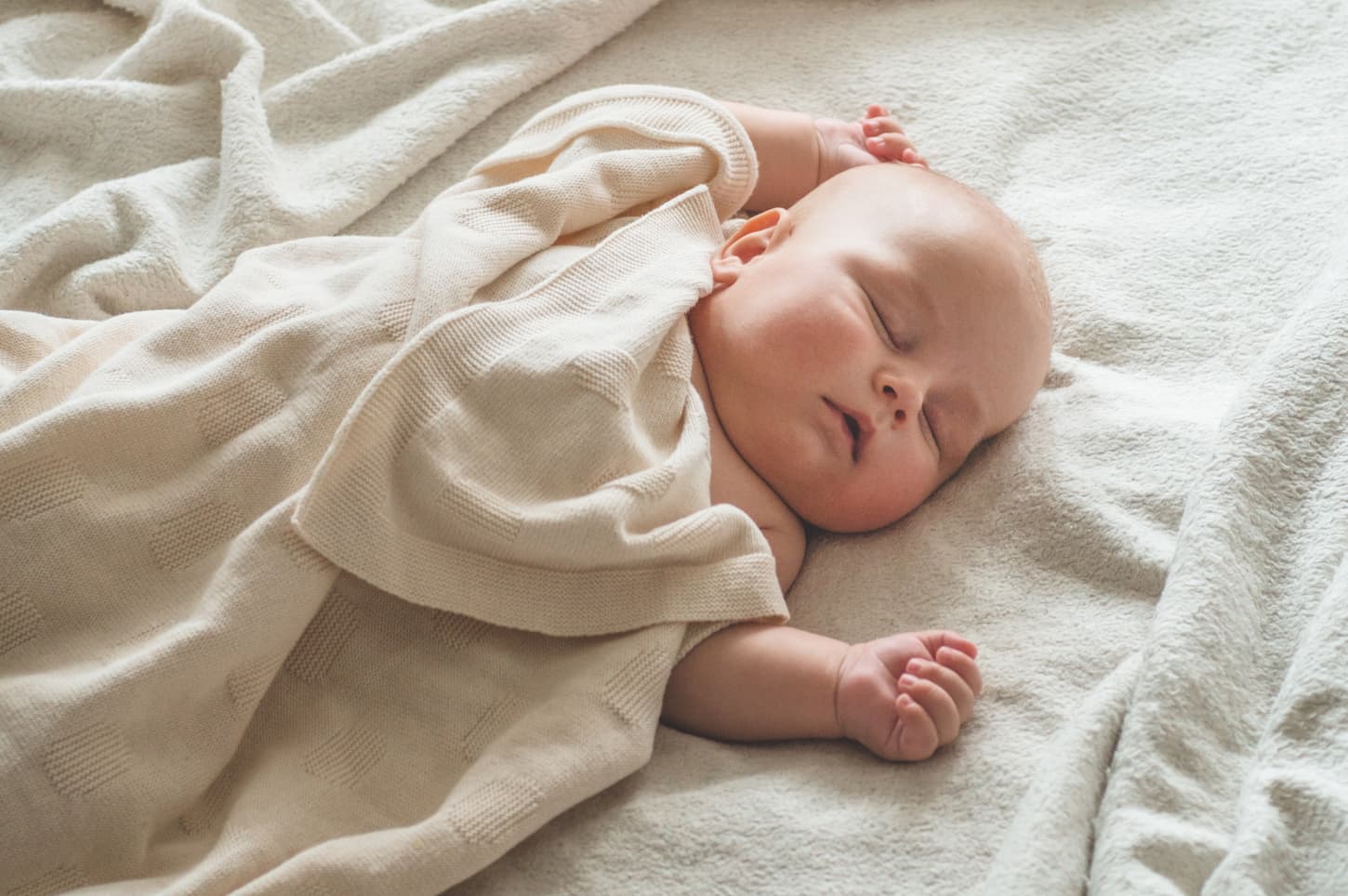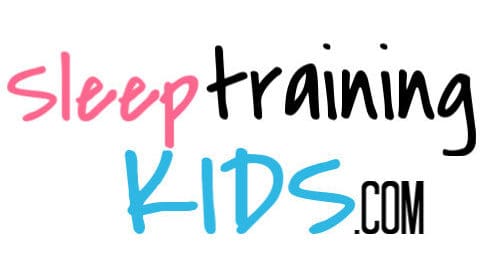As a parent, you’ve probably heard about sleep training and how it can be a savior when it comes to getting a good night’s sleep. But for some babies, learning how to fall asleep alone can be stressful, especially if you use cry-it-out techniques. No parent likes to listen to their baby crying, and it’s natural if you’re wondering whether sleep training will affect your baby’s personality.
Each baby is different with sleep training, but most parents and studies suggest that it won’t change your baby’s demeanor except to make them happier and rested overall. Your baby might be cranky during sleep training, but generally, sleep training won’t have any negative long-term effects.
If your baby is old enough to start sleep training, any personality changes should be positive, beneficial ones – though it might not seem like it when your baby is screaming the house down at bedtime. In this article, we’ll put instincts aside for a moment and look at what the science says about whether or not sleep training will change your baby’s demeanor.

What’s Sleep Training?
Sleep training is when you develop a good sleep routine for your baby and teach them how to fall asleep independently. Most babies are ready to start sleep training at around 6 months old, depending on their development.
With sleep training, you teach your baby how to self-soothe, which means they can fall asleep alone, without physical contact from their parents. It’s a major development milestone when babies can self-soothe and send themselves back to sleep. Babies that self-soothe have a better quality of sleep, and so do their parents. According to several studies, mothers who get good sleep are less likely to suffer from depression.
Many sleep training methods involve using “cry it out” (CIO) techniques, where you leave your baby to cry themselves to sleep so they learn how to self-soothe. Not all sleep training methods involve leaving your baby to cry, but many people associate the term “cry it out” with sleep training.
What Are The Different Cry It Out Techniques?
There are several cry-it-out (CIO) techniques, such as full extinction, where you don’t give your baby any physical comfort during sleep training. Other methods include controlled crying when you give your baby regular physical comfort while they cry.
Many parents find the idea of full extinction sleep training a bit extreme, but it’s a very quick and effective way to sleep train most babies. You can potentially fully sleep train your baby within a week using the full extinction technique. Generally speaking, the gentler sleep training methods (that require less crying) such as gradual extinction and fading take longer to work.
To give you a better idea about the different CIO methods, we’ve listed the main ones below:
Technique #1 – Full Extinction
Full extinction is when you put your baby down for bed, and when you leave the room and let them cry themselves to sleep. It can take anywhere between 10 minutes and 3 hours of crying before your baby falls asleep – which can be hard going for some parents.
With full extinction, you still need to monitor your baby closely, but you keep physical contact and soothing to a minimum and only enter the room when you need to. If your baby’s crying changes suddenly during full extinction, always check if they need food or a diaper change – you still need to take care of your baby’s essential needs.
Technique #2 – Gradual Extinction
With gradual extinction, instead of leaving your baby to cry uninterrupted, you enter the room to check on them at regular intervals – every 15 or 20 minutes for example. When you enter your baby’s room, you should only use your voice to soothe them, no physical contact.
The benefit of regular check-ins is that your baby knows that you’re physically there for them. However, when you enter the room, it may stimulate or confuse your baby and it may make them cry more when you leave again.
Technique #3 – Faded Extinction
With faded extinction, you make regular checks on your baby after bedtime, but then you gradually fade them out as the night goes on. In the first hour, you might check your baby every ten minutes, then reduce this to every 20 minutes, then 30 minutes until your baby falls asleep.
Technique #4 – Controlled Crying
Controlled crying is when you let your baby cry for a set amount of time, usually 5 or 10 minutes. Once your baby has been crying for a set period, 10 minutes, for example, you pick them up and give them physical comfort, then put them back down again. You repeat this process until your baby falls asleep.

Does Crying It Out Change Baby’s Personality?
If you start sleep training at the right age, it shouldn’t negatively change your baby’s personality. If anything, babies are much happier and brighter after sleep training because they’re getting the optimum amount of sleep.
Tired babies are usually grumpy and fussy, but if they are seriously sleep-deprived, it could be bad for their physical and mental development too. If you and your baby are suffering because you’re not getting enough restful sleep, sleep training can help you out a lot. Sure, there may be several nights of crying, but it will help you and your baby sleep better in the long run.
The only time sleep training can be bad for your baby is if you start them too young. Most babies can self-soothe from around 3 or 4 months old, but most pediatricians and sleep experts don’t recommend using CIO sleep training until your baby is around 6 months old. At 6 months, a baby’s brain is much more developed, and they have a clear sense of day and night.
You should never leave a baby under 3 or 4 months old to cry it out – this can be bad for their well-being and development. Young babies need to feel secure, and often they cry for a valid reason. From 3 months, you can start using gentle sleep training methods on your baby but not CIO.
Many studies show that sleep training before six months has no benefit and can be bad for a baby’s health and development. Furthermore, listening to a very young baby crying can worsen postnatal depression and cause maternal anxiety. If babies below 3 months old are left to cry it out, it can lead to a problem with crying in the future, and it may also increase the risk of sudden infant death syndrome (SIDS).
Always speak to your physician about your baby’s development before you begin with CIO sleep training.
Does Sleep Training Traumatize Babies?
As long as sleep training starts when your baby is developed enough, most studies suggest it doesn’t traumatize them. Even though it may seem like your baby is traumatized when they cry it out, this is usually temporary and won’t have negative long-term effects.
You should never use CIO on newborns, babies under 4 months old, or a baby who has suffered any kind of trauma, such as abandonment. You should also avoid sleep training for babies with health or development issues – only use CIO on healthy, well-developed babies. Premature babies may benefit from sleep training, but you’ll need to use their adjusted age rather than their actual age.
Of course, there are also many arguments about why you shouldn’t leave your baby crying, but ultimately it comes down to your personal choice as a parent. When you make choices about your baby’s welfare, it’s better for you and your baby if you’re well informed. Many scientific studies suggest that CIO doesn’t traumatize babies, and we’ll look at some of them below.
Study #1 – Sweden 2004
A study in Sweden in 2004 involved 95 babies between 4 and 45 months old with sleep problems. In the study, the group using gradual extinction reported significant improvements in sleep quality, daytime behavior, and family well-being after just two weeks. It also found that the babies who were more anxious and insecure at the start of the study seemed to benefit the most from sleep training.
Study #2 – Australia 2016
A study of 43 infants from Australia in 2016 about behavioral interventions for infant sleep problems reported:
Both graduated extinction and bedtime fading provide significant sleep benefits above control, yet convey no adverse stress responses or long-term effects on parent-child attachment or child emotions and behavior.
2016 study in Australia
The follow-up study at 12 months stated:
No significant differences were found in emotional and behavioral problems and no significant differences in secure-insecure attachment styles between groups.
The study also suggested there were no cortisol (stress hormone) spikes in the sleep-trained children.
Study #3 – USA 2015
The Wendy Hall Study is often cited as the most comprehensive study about CIO sleep training. Past studies often come under criticism for not being tightly controlled because they depended a lot on data from parent surveys, for example.
The Wendy Hall study involved 235 babies and was more controlled because it used more rigorous testing, such as physical monitoring devices.
The study showed that even after sleep training babies still wake up during the night. The difference is that they don’t disturb their parents because they can fall back to sleep unaided. The study also stated that sleep training improved parental mental health, reduced fatigue, and helped babies to overcome sleep problems.
Study #4 – Australia 2012 – 5 Year Follow Up Study
This study was a 5-year follow-up to monitor the long-term effects of sleep training on the emotional and mental development of 326 children.
It looked at things like stress regulation, mental health, psychosocial functioning, maternal mental health, and the child-parent relationship. The study concluded that:
Behavioral sleep techniques have no marked long-lasting effects (positive or negative). Parents and health professionals can confidently use these techniques to reduce the short- to medium-term burden of infant sleep problems and maternal depression.

Will Sleep Training Make My Baby Hate Me?
The bond between parent and baby is one of the strongest in the world, and it will take more than a few tears to break it. During sleep training, you’re not abandoning your baby, and they always know you’re there to cover the basic needs.
In some ways, you’re not making your baby cry, you’re allowing them to do so – when they stop is ultimately up to them. Babies cry all the time for diaper changes, food, and even due to tantrums, and crying is a normal part of being a baby. As long as your baby knows you’re still there to meet their needs and that you’re not abandoning them, they won’t hate you.
What Are the Alternatives to CIO Sleep Training?
Not all babies or parents are suited to CIO sleep training and there are many methods of tear-free sleep training, such as bedtime fading or the chair method. Tear-free sleep training generally takes longer than CIO, and there’s not much evidence to say it’s any better in the long run.
Some parents, and babies, simply can’t adapt to CIO sleep training. If CIO isn’t working for you, try gentler methods such as using a strong focus on your bedtime routine. You can also gradually fade out negative sleep associations such as feeding or rocking your baby.
Another no tears method is known as “the chair” or “camping out,” and this is when you stay in your baby’s room while they cry and offer them plenty of verbal comforts. Over a period of a few weeks, you gradually move your chair away from their crib towards the door until eventually, you’re not in the room at all.
Consider your baby’s personality when you choose your sleep training method. Some babies are natural self-soothers, while others are inclined to cry out for attention. If your baby is good at self-soothing, they will usually adapt well to full extinction and other CIO methods. If your baby is very needy and cries out a lot for attention, opt for gradual extinction or softer sleep training methods.
Will Sleep Training Make Your Baby Inflexible?
Whether or not your baby will become inflexible after sleep training depends a lot on their personality. Sleep training is based on routine and sleep associations, so most of the time, a sleep-trained baby will depend on these – but some babies will depend on them more than others.
Babies who are natural self-soothers and that have taken to sleep training easily will generally be more flexible than babies who depend a lot on external factors to get to sleep. Often, you can tell before sleep training which babies are natural self-soothers and which ones are “signalers” who cry out to get attention.
Here are the signs your baby is a self-soother:
- They are generally good sleepers.
- They fall asleep easily and go back to sleep without a fuss when they wake up at night.
- They might sleep for longer periods during the night and for naps.
- They use pacifiers such as their thumb, humming, babbling, or cuddling themselves to put themselves to sleep.
Here are the signs your baby is a signaler:
- They have more trouble getting off to sleep.
- They take longer to settle into routines.
- They stop crying when they see you.
- They don’t use any self-soothing techniques – they always depend on your presence or comfort to get back to sleep.
How Long Is It Ok to Let Baby Cry It Out During Sleep Training?
The amount of time you let your baby cry it out during training depends on the method you use. With full extinction, babies can potentially cry for up to 3 hours. If you’re using a gradual method, usually, you would leave your baby to cry for between 5 and 30 minutes.
You should never let a newborn baby cry it out or babies who are ill, and if your child cries to the point of vomiting or pooping from the strain of crying, you should stop and comfort them immediately. You should also comfort your baby if you find their crying overly distressing or if it’s driving you insane.
Make sure you always tend to your baby’s needs, such as a diaper change, even if they’re crying it out.
And if you want more information on letting your baby cry it out, we’ve got several articles for you here.
- How Long Do You Let a Baby Cry It Out? (25 Things To Know)
- Cry it Out Sleep Training: a Complete Guide with Q&A
- Can You Let a Baby Cry It Out While Swaddled?
- Is It OK to Let a 1-Year-Old Cry It Out?
They’re each great articles, so feel free to read the one (or several) that appeal most to your situation.
Best Products For Sleep Training
When you’re trying to sleep train, sometimes having the right stuff does make a difference. Here are some products we’ve used, loved, or gotten great feedback on from users like you.
- Babies sleep better with a shushing noise. That’s why white noise machines work so great. This is the one we’ve used and loved (on Amazon) for years, though it’s a mechanical noisemaker. If you want a recording, though, then this one on Amazon is a new option with great reviews.
- A baby monitor is a lifesaver while sleep training. The video monitor we had and used is way out of date, so this is the one we’d get if we were buying one today (click here to see pricing on Amazon).
- A nightlight makes your life easier while letting the baby sleep. This one, available on Amazon, is a great price while having some great lighting features depending on how bright you need the room.
Want to see all the products we recommend? Check out our Best Sleep Training Resources: The Stuff That Works page for products by category.

Next Steps
Each baby is different with sleep training, but overall, it shouldn’t change their personality. Babies might be a bit clingy or cranky for a few days during and after sleep training, but this is only due to the stress of the routine change. Once they settle into their new routine, they should be happier than ever with a regular sleeping pattern.
If your baby seems traumatized during sleep training, remember that the parent/baby bond is strong, and studies suggest that CIO and sleep training have no long-lasting negative effects.
Try and choose a method that suits your baby’s personality and only sleep train your baby when they’re physically and mentally ready for it. Usually, babies are around six months old when they’re ready for CIO but always check with your pediatrician first.
In the meantime, make sure you read this article next, so that you’re ready for any sleep training surprises, like a partner who’s not totally on board with your same sleep training plan.
Resources
Learning about parenting or sleep training techniques is important to learn from various reputable sources. These are the sources used in this article and our research to be more informed as parents.
- Etherton, Hayley, et al. “Discussion of Extinction-Based Behavioral Sleep Interventions for Young Children and Reasons Why Parents May Find Them Difficult.” Journal of Clinical Sleep Medicine, vol. 12, no. 11, 2016, pp. 1535–43. Crossref, doi:10.5664/jcsm.6284.
- France, Karyn G. “Behavior Characteristics and Security in Sleep-Disturbed Infants Treated with Extinction.” Journal of Pediatric Psychology, vol. 17, no. 4, 1992, pp. 467–75. Crossref, doi:10.1093/jpepsy/17.4.467.
- KinderCare Learning Centers. “Born to Sleep? How a Babyâs Temperament Affects Their Ability to Sleep.” KinderCare Learning Centers, www.kindercare.com/content-hub/articles/2015/September/the-dr-super-sleep-series-what-is-your-baby’s-sleep-temperament. Accessed 11 Apr. 2022.
- “Leaving Your Baby to ‘cry It out’ Has No Adverse Effects on Child Development, Study Suggests.” ScienceDaily, www.sciencedaily.com/releases/2020/03/200310193305.htm. Accessed 11 Apr. 2022.
- “Let Crying Babes Lie: Study Supports Notion of Leaving Infants to Cry.” Temple Now | News.Temple.Edu, 7 May 2016, news.temple.edu/news/2012-12-13/let-crying-babes-lie-study-supports-notion-leaving-infants-cry-themselves-back-sleep.
- Paul, Ian M., et al. “INSIGHT Responsive Parenting Intervention and Infant Sleep.” Pediatrics, vol. 138, no. 1, 2016. Crossref, doi:10.1542/peds.2016-0762.
- Riley Children’s Health. “Does Sleep Training Your Baby Cause Long Term Harm?” Riley Children’s Health, 24 Sept. 2020, www.rileychildrens.org/connections/does-sleep-training-your-baby-cause-long-term-harm.
- Ruggeri, Amanda. “What Really Happens When Babies Are Left to Cry It Out?” BBC Future, www.bbc.com/future/article/20220322-how-sleep-training-affects-babies. Accessed 11 Apr. 2022.
- St James-Roberts, Ian, et al. “Video Evidence That London Infants Can Resettle Themselves Back to Sleep After Waking in the Night, as well as Sleep for Long Periods, by 3 Months of Age.” Journal of Developmental & Behavioral Pediatrics, vol. 36, no. 5, 2015, pp. 324–29. Crossref, doi:10.1097/dbp.0000000000000166.
